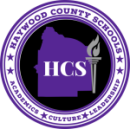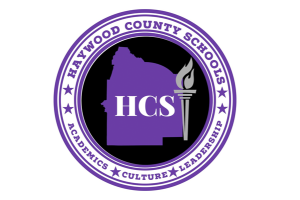The Math Collaborative
Collaboration in a professional setting is necessary for growth and success. Working in isolation can cause a professional in any occupation to become stagnant and ineffective. Unfortunately, educators are often secluded in their classrooms as they try to improve and perfect their craft on their own.
This year, Haywood County Schools has implemented The Math Collaborative led by John Prince in order to allow math teachers across the district an opportunity to give and receive consistent feedback to and from their peers.
“In The Math Collaborative, we take teams of teachers and go into other math classes and talk about instruction. Not only do we talk about math instruction, but teachers can spend the day with other math teachers in the system that other teachers have never met,” John explained.
The first step of making sure math was being taught as effectively as possible across the district was making sure students had high-quality math materials in front of them. Before Mr. Prince joined the team at HCS, he worked with Instruction Partners and was able to observe some good practices that were already occurring in HCS.
“Teachers were working hard, but there were things being taught that were misaligned with the standards,” he explained. “The first step was aligning the curriculum.”
For the last several years, the math curriculum in HCS has been aligned with the state standards and appropriate grade levels. The next step for the department and Mr. Prince was to add the collaborative piece to encourage consistent growth among all math teachers.
“The profession of education doesn’t lend itself to constant learning and constant growth. Most systems will have professional development days every now and then, but there’s no opportunity for consistent growth. These collaborative walks offer that,” John said.
The majority of observations or walk-throughs are done by an administrator or team of administrators. While those are necessary, they can also feel intimidating for a teacher. The collaborative walks offer peer observations and peer feedback on a common subject. Teachers who are giving and receiving feedback can both learn something new for their classes.
“With these walks, you take secondary or upper elementary Math teachers into Kindergarten math class, and they see that students can actually talk about math or talk about their own solution path. You take elementary math teachers to secondary classrooms, and they can see students working through complex solution paths,” John explained.
After leaving each classroom, the team will meet immediately and discuss what they observed.
“As soon as we leave a classroom, we talk about it immediately – what we liked, what we could improve,” John said. “We ask three initial questions: Was the work on grade level? Were the students able to see a connection to something they’ve previously learned? Were the students the ones actually doing the work? The rest of the discussion flows out of that.”
The immediate discussion and collaboration is beneficial for the observers but also for the teacher. The guiding form used for these observations is called an Instructional Practice Guide (IPG) and has been tweaked to be more student-centered rather than focusing solely on the teacher. John explained the reason for that.
“We changed our IPG to make it more student-centered. We took the word ‘teacher’ out and replaced it with ‘student’. Good instruction is all about the student – is the student engaged, working, and learning,” John explained.
In the end, The Math Collaborative provides teachers a multi-faceted way to observe and be observed. It allows a team of teachers to see a peer in action in the classroom and gain insight to what success that teacher is having. John drew a comparison to the medical field while explaining the nuances of the collaboration.
“In the medical profession, teams of doctors and specialists will go on rounds together. They’ll discuss the different aspects of care for a patient. These collaborations are like that; they give opportunities for multiple discussions about learning,” he explained.
The more discussion and reflection that can take place, the more likely effective teaching and learning will occur. The Math Collaboration provides space for both. Most importantly, it will benefit students in all grades.


